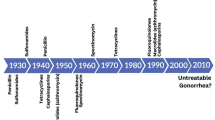Abstract
Background
Urinary tract infection (UTI) is one of the common infections in childhood. Prompt diagnosis and treatment reduces the risk of complications. The choice of antibiotic to treat UTI varies from region to region. Rational use and appropriately chosen antibiotic reduces the emergence of resistant uropathogens.
Objective
We investigated the resistance pattern of uropathogens for commonly used antibiotics to treat UTI locally.
Methods
Data was collected between 2009 and 2019 on all infants and children under 16 years of age with culture proven UTI. Results were compared with previously published figures between 2002 and 2008.
Results
A total of 1002 samples were analysed (91/year). Male to female ratio was 1:4.6. About 94% of the samples grew E. coli. As before, high resistance rates were recorded to Amoxicillin and Trimethoprim (Z = −0.325: P = 0.7452; not significant). Overall, average resistance has decreased for Nitrofurantoin from 10% between 2002 and 2008 to 5.84% between 2009 and 2019 (Z = 3.002: P = 0.0027). On the other hand, Cefalexin resistance has increased from 7.4 to 14.56% between the two study periods (Z = −4.2: P = < 0.0002).
Conclusion
Despite rising resistance rates, we recommend that Cefalexin should cautiously remain the antibiotic of choice for empirically treating uncomplicated urinary tract infections in secondary care pending urine culture. Nitrofurantoin should be reserved for treating non-coliform/atypical UTIs or multi-drug resistant UTIs. There is an ongoing need for clinicians in all geographic regions to continue to monitor antibiotic resistance rates every few years.





Similar content being viewed by others
References
NICE (2019) Clinical knowledge summaries: urinary tract infection—children. National Institute for Health and Care Excellence. https://cks.nice.org.uk/topics/urinary-tract-infection-children/. (last accessed on 29.12.2020)
Coulthard MG, Lambert HJ, Vernon SJ et al (2014) Does prompt treatment of urinary tract infection in preschool children prevent renal scarring: mixed retrospective and prospective audits. Arch Dis Child 99(4):342–7
Bryce A, Hay AD, Lane IF et al (2016) Global prevalence of antibiotic resistance in paediatric urinary tract infections caused by Escherichia coli and association with routine use of antibiotics in primary care: systematic review and meta-analysis. BMJ 352:i939
NICE (2015) Antimicrobial stewardship: systems and processes for effective antimicrobial medicine use (NG15). https://www.nice.org.uk/guidance/ng15. (last accessed on 29.12.2020)
Chakupurakal R, Ahmed M, Sobithadevi DN et al (2010) Urinary tract pathogens and resistance pattern. J Clin Pathol 63:652–654
http://vassarstats.net/vsprops.html. (last accessed on 29.12.2020)
Bryce A, Costelloe C, Wootton M et al (2018) Comparison of risk factors for, and prevalence of, antibiotic resistance in contaminating and pathogenic urinary Escherichia coli in children in primary care: prospective cohort study. J Antimicrob Chemother 73(5):1359–67
Allawendy SA, Farhan M, Biagini A et al (2019) Uropathogen profile in the paediatric population—a comparative study between two geographically distinct regions in Ireland. Arch Dis Child 104:A393
Erol B, Culpan M, Caskurlu H et al (2018) Changes in antimicrobial resistance and demographics of UTIs in pediatric patients in a single institution over a 6-year period. J Paed Urol 14(2):176.e1-176.e5
Eremenko R, Barmatz S, Lumelsky N et al (2020) Urinary tract infection in outpatient children and adolescents: risk analysis of antimicrobial resistance. Isr Med Assoc J 22(4):236–240
Shaikh N, Hoberman A, Keren R (2016) Predictors of antimicrobial resistance among pathogens causing urinary tract infection in children. J Pediatr 171:116–121
Sotto A, De Boever CM, Fabbro-Peray P et al (2001) Risk factors for antibiotic-resistant Escherichia coli isolated from hospitalized patients with urinary tract infections: a prospective study. J Clin Microbiol 39(2):438–44
Cheng CH, Tsai MH, Huang YC et al (2008) Antibiotic resistance patterns of community-acquired urinary tract infections in children with vesicoureteral reflux receiving prophylactic antibiotic therapy. Pediatrics 122(6):1212–7
Allen UD, MacDonald N, Fuite L et al (1999) Risk factors for resistance to “first-line” antimicrobials among urinary tract isolates of Escherichia coli in children. CMAJ 160(10):1436–40
Edlin RS, Copp HL (2014) Antibiotic resistance in pediatric urology. Ther Adv Urol 6(2):54–61
World Health Organisation (2020) Antibiotic resistance. https://www.who.int/news-room/fact-sheets/detail/antibiotic-resistance. (last accessed on 29.12.2020)
NICE (CG54) Urinary tract infection in under 16s: diagnosis and management. https://www.nice.org.uk/guidance/cg54/resources/urinary-tract-infection-in-under-16s-diagnosis-and-management-pdf-975507490501. (last accessed on 29.12.2020)
Acknowledgements
Authors would like to thank Dr DN Sobithadevi and Dr Yasmin Jolly for their help in data collection.
Author information
Authors and Affiliations
Contributions
All authors have participated in data collection, data analysis, writing the manuscript, and approval of the submitted version of the manuscript.
Corresponding author
Rights and permissions
About this article
Cite this article
Ahmed, M., Long, W.N.W., Javed, S. et al. Rising resistance of urinary tract pathogens in children: a cause for concern. Ir J Med Sci 191, 279–282 (2022). https://doi.org/10.1007/s11845-021-02531-4
Received:
Accepted:
Published:
Issue Date:
DOI: https://doi.org/10.1007/s11845-021-02531-4




